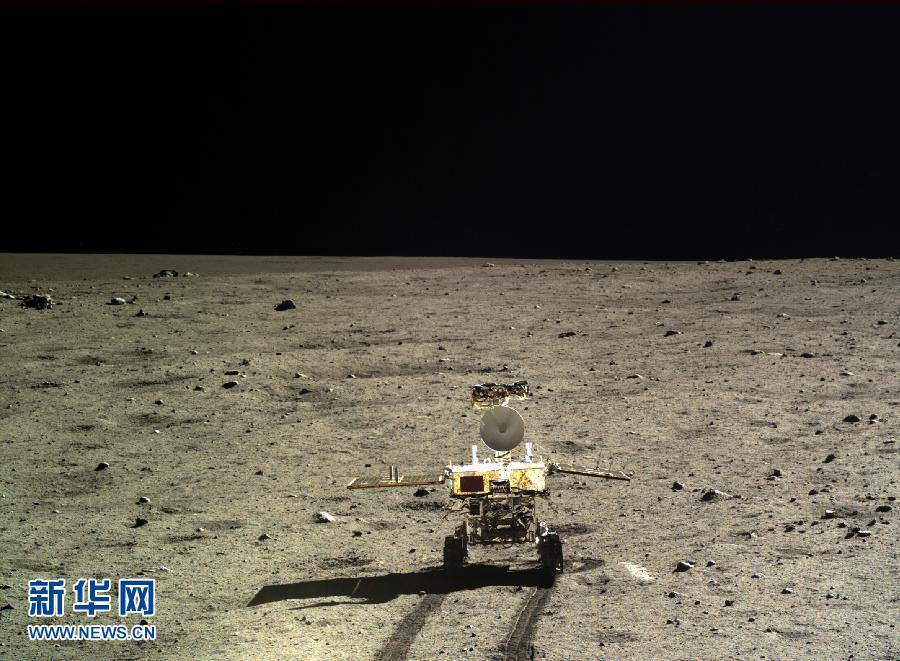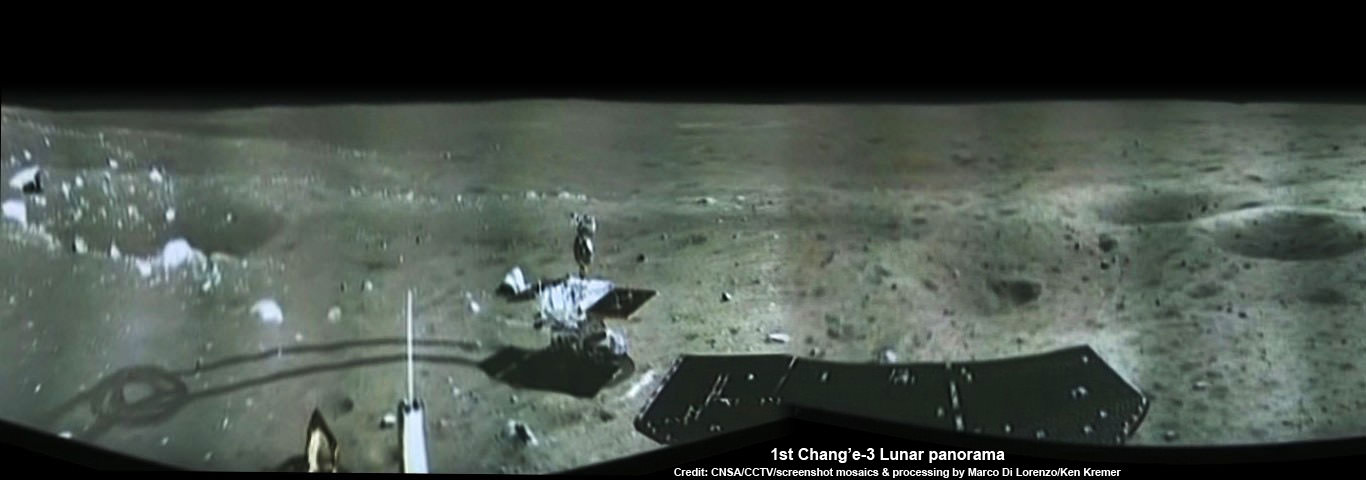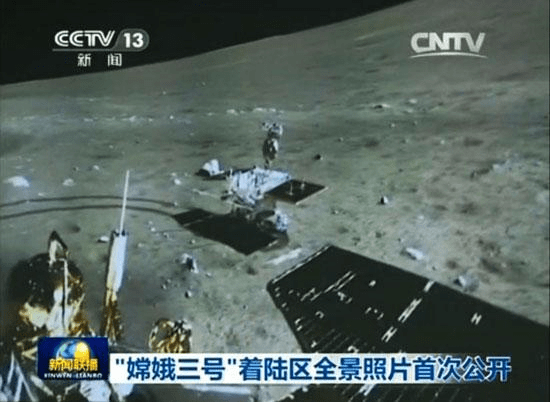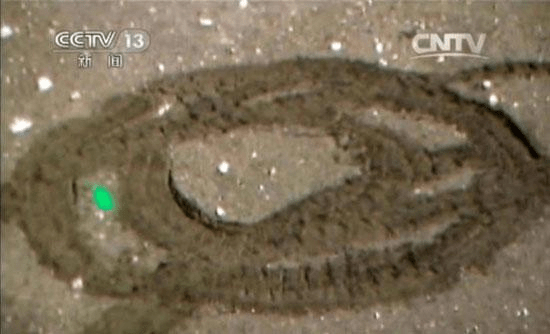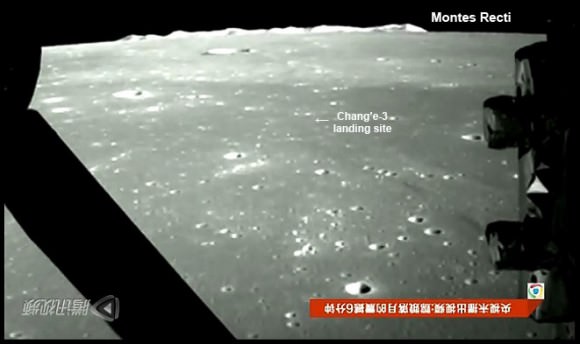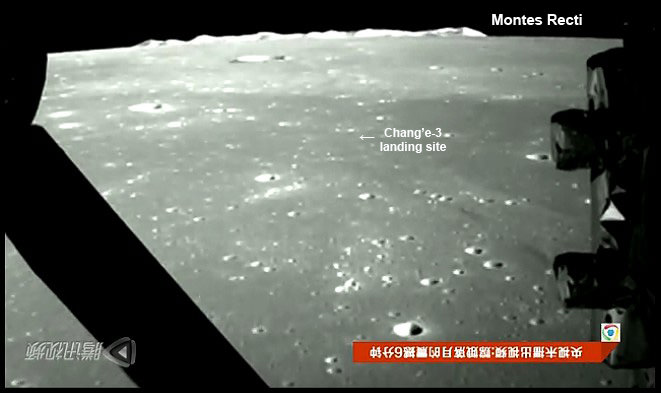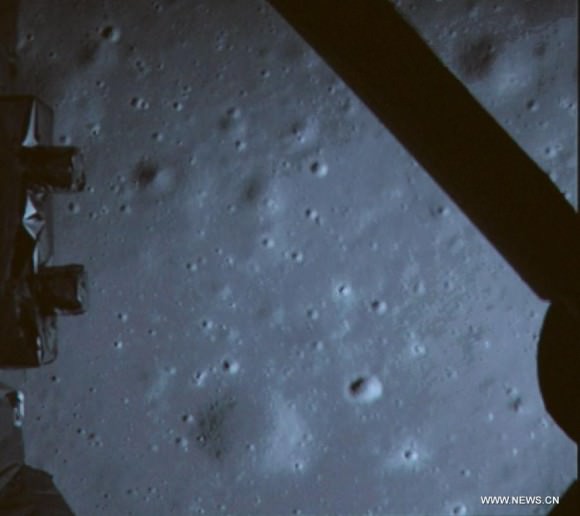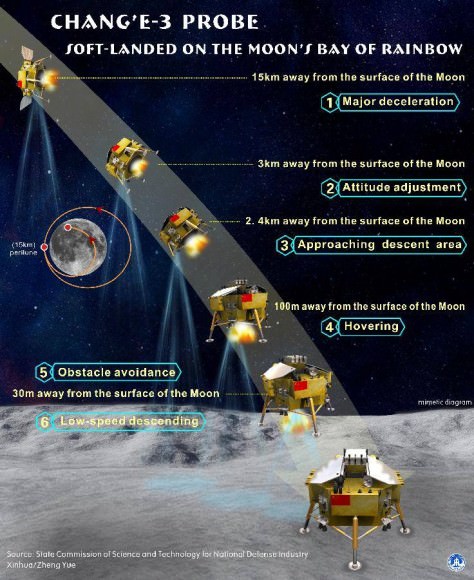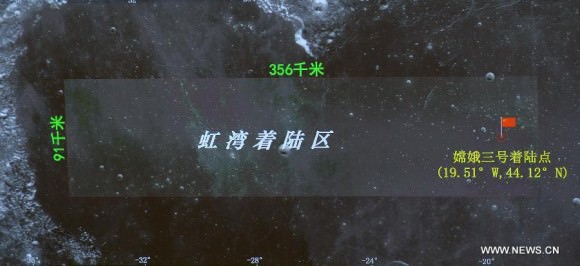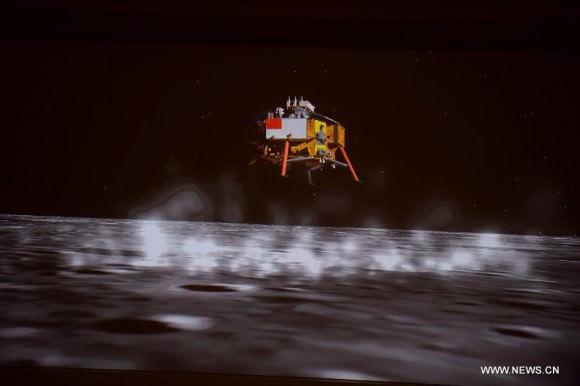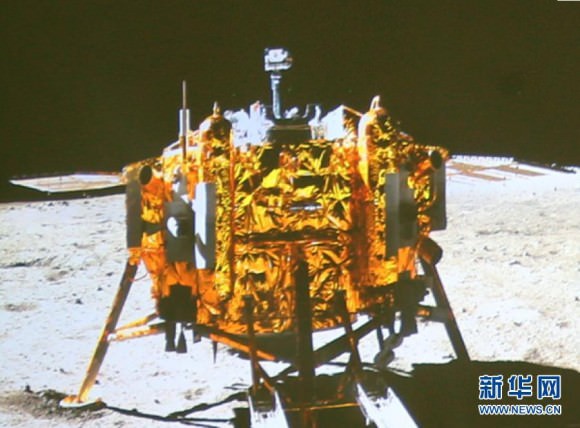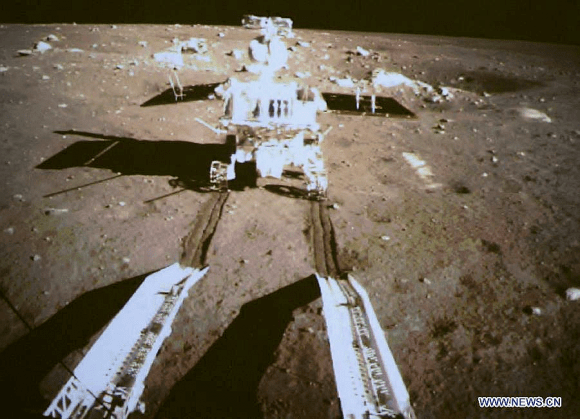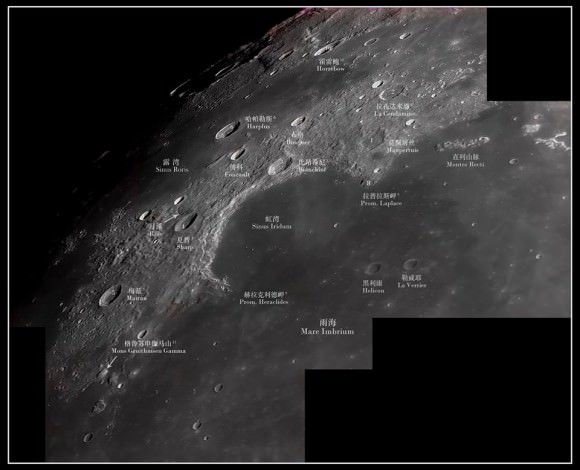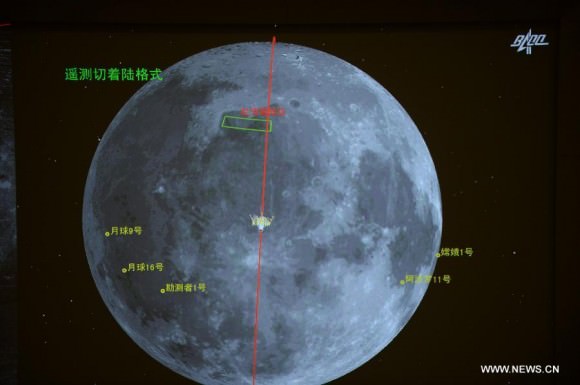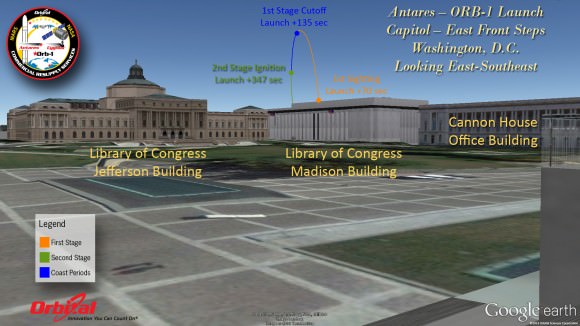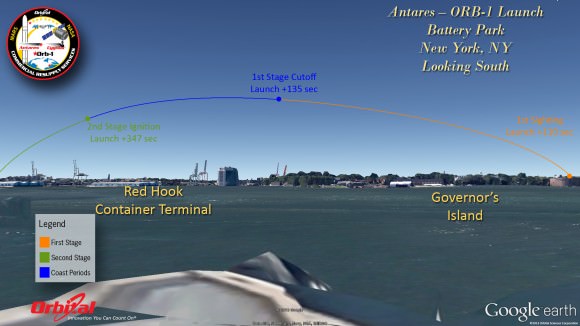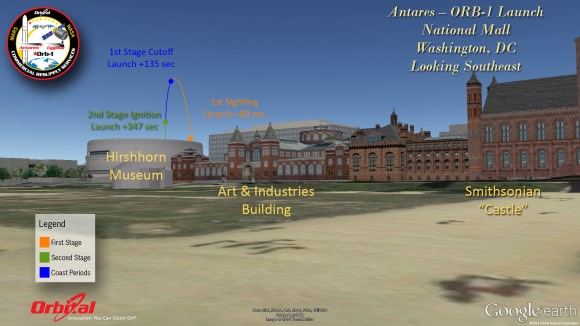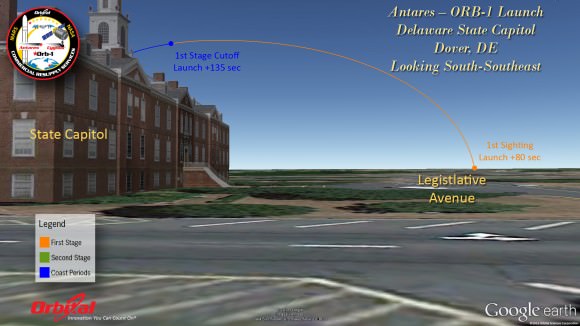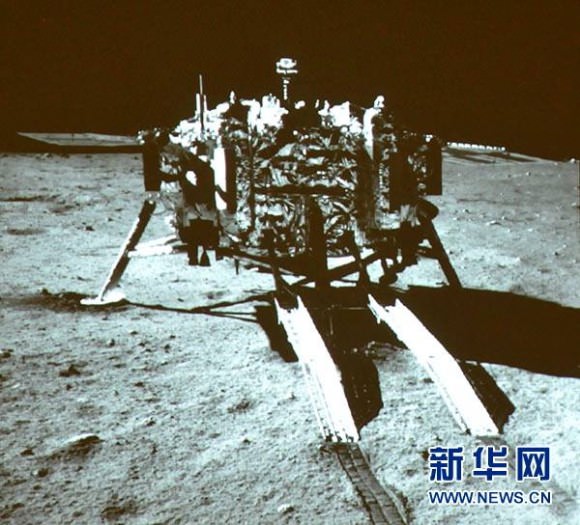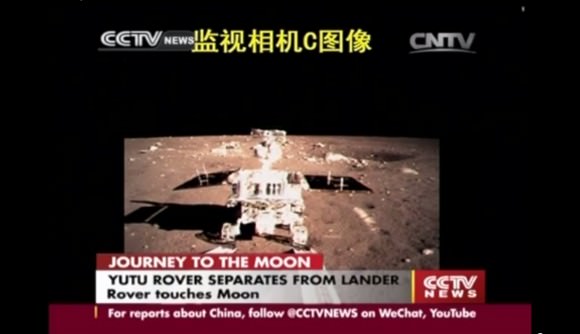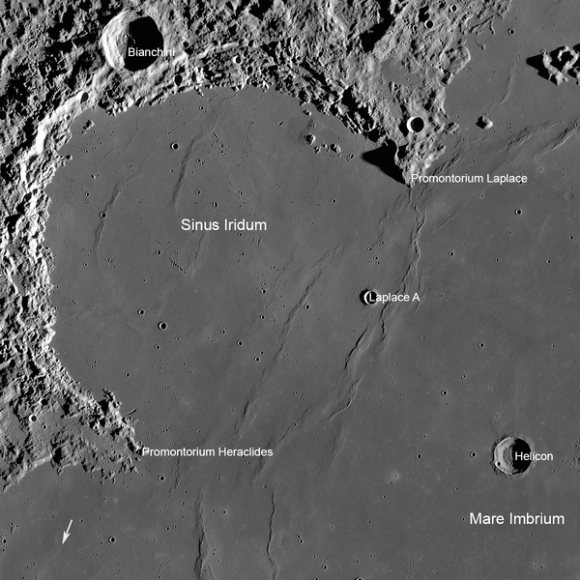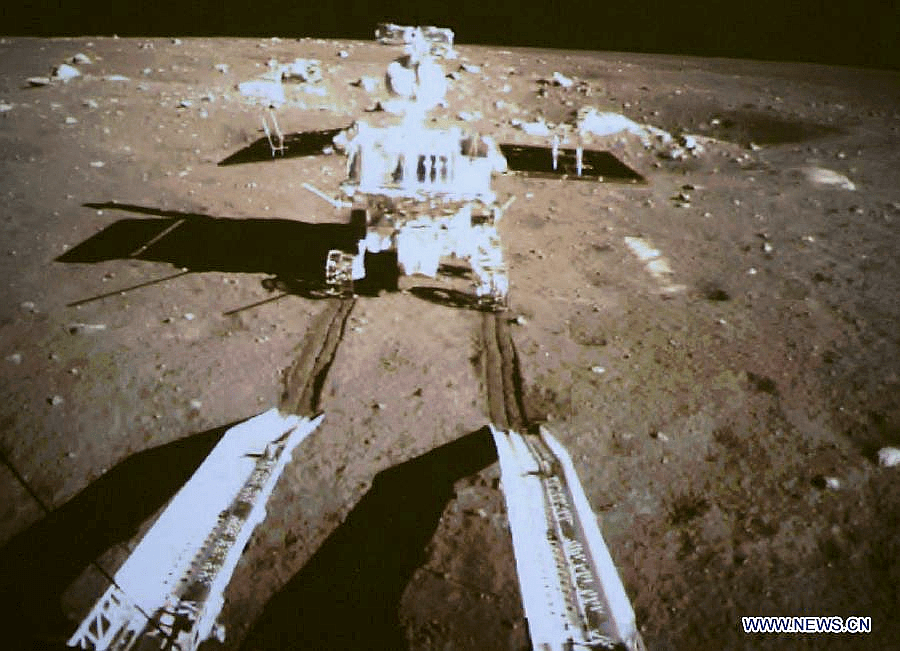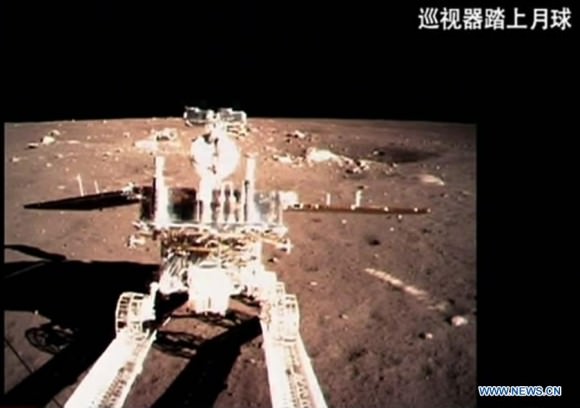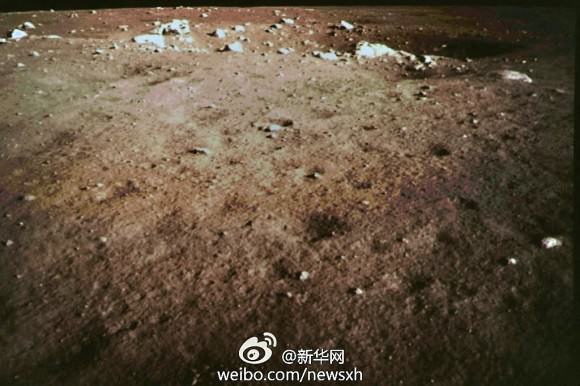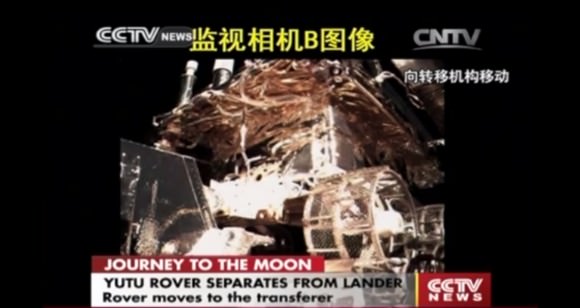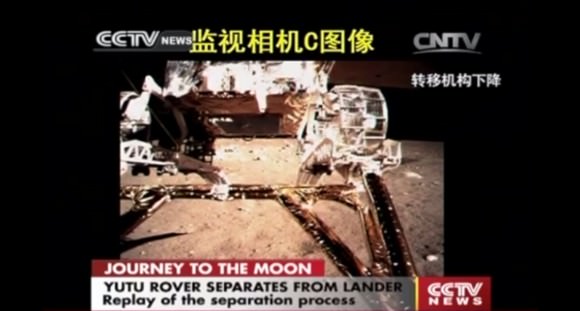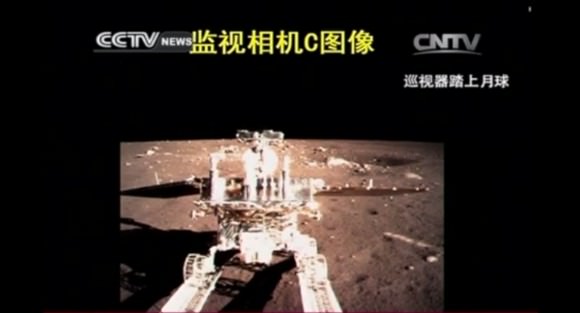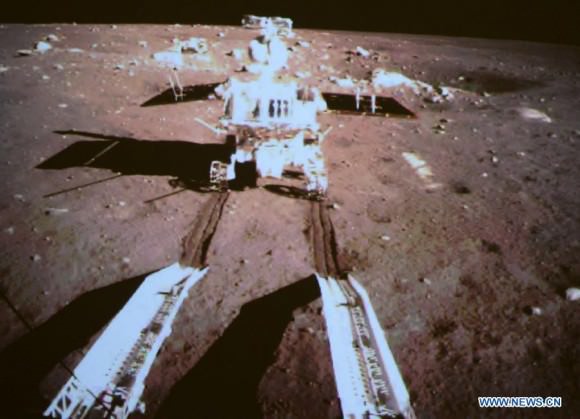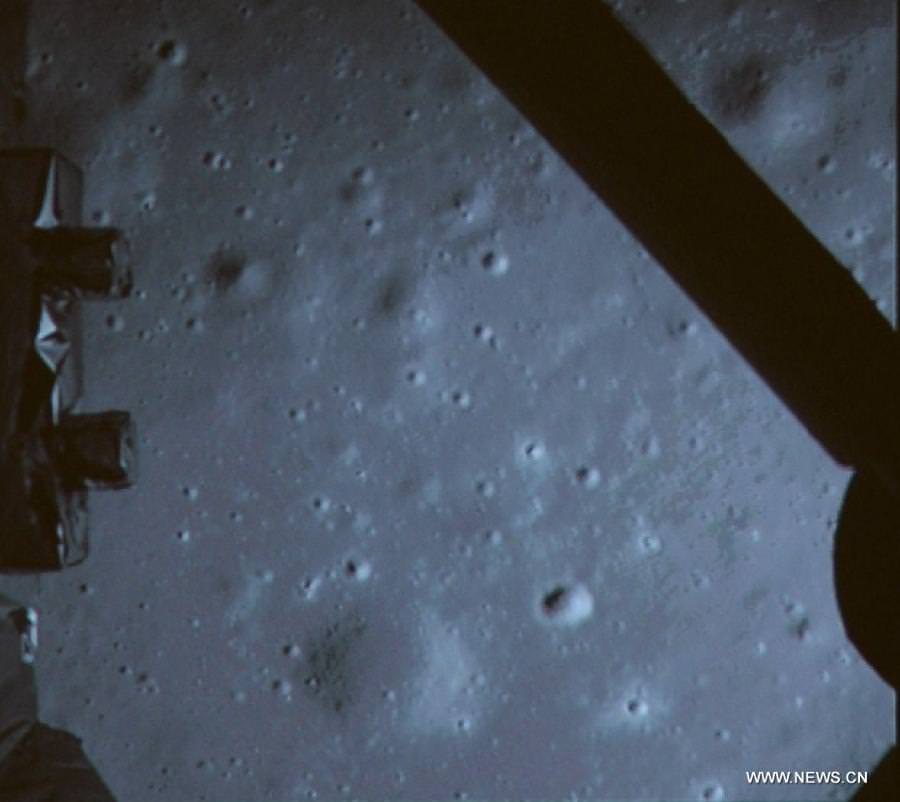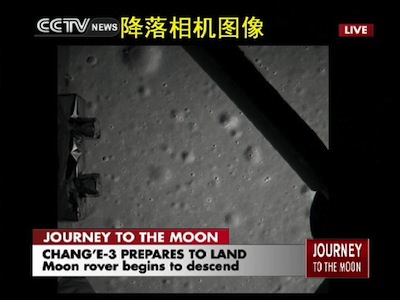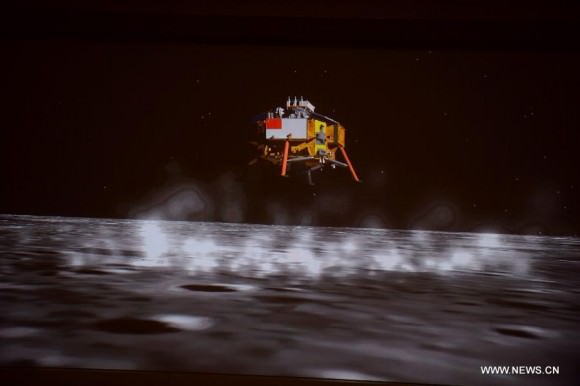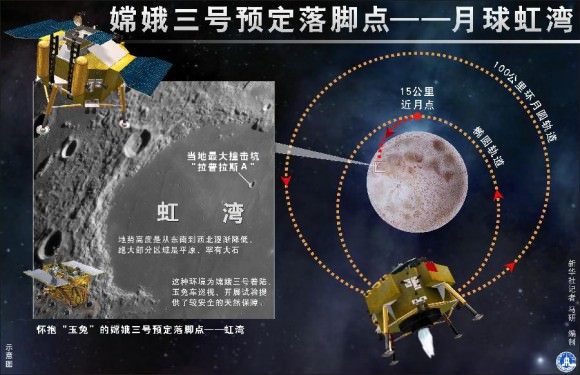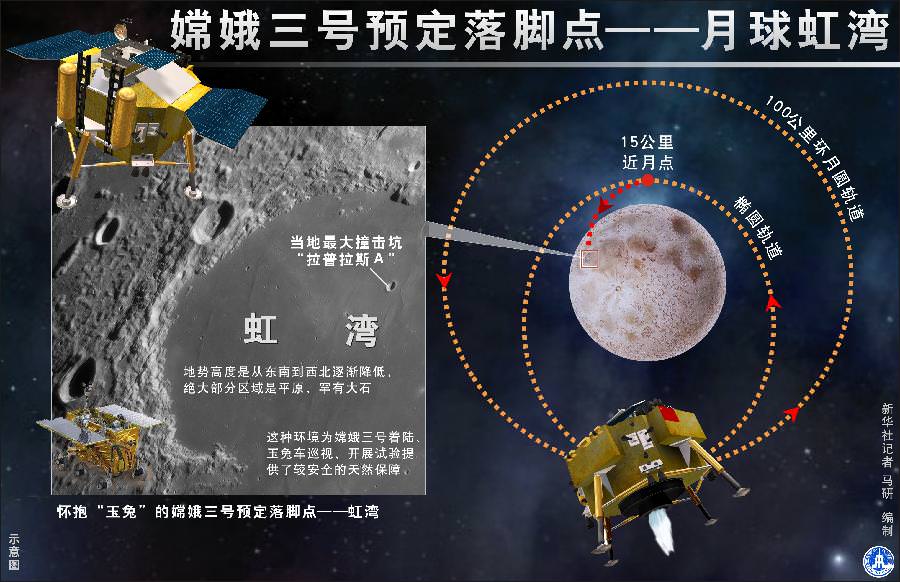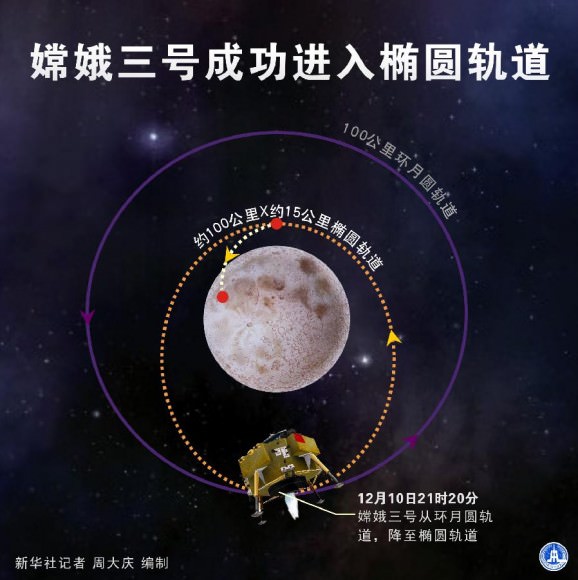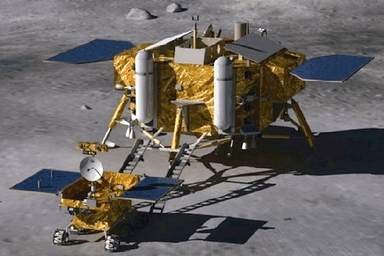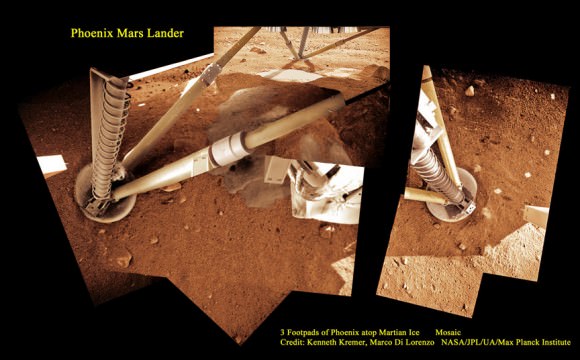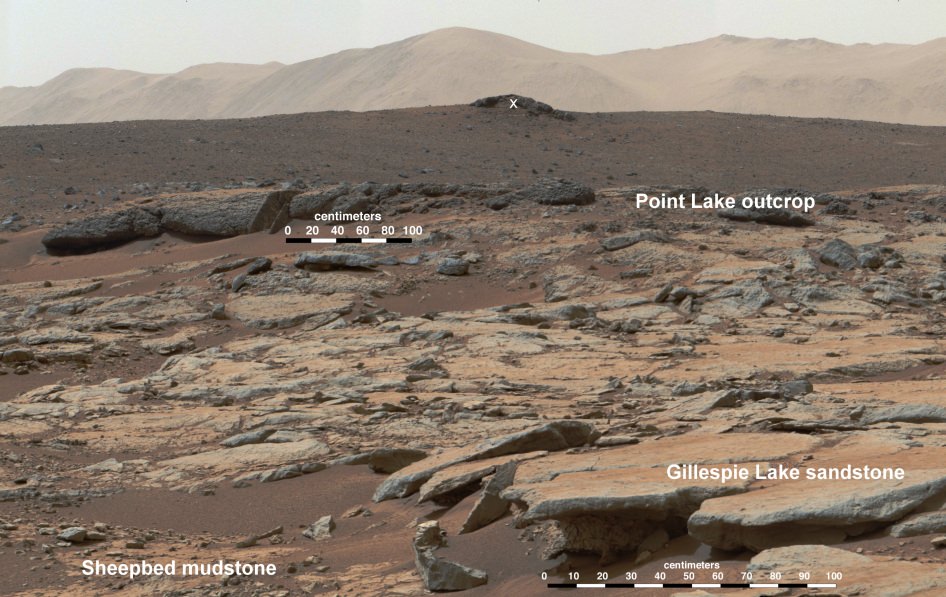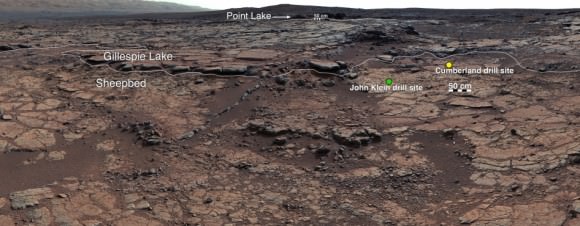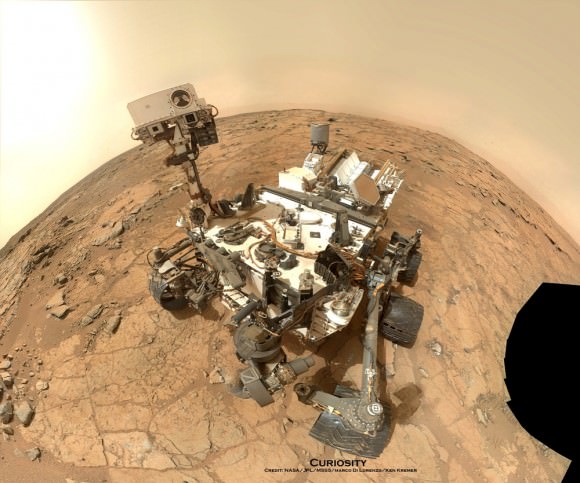China’s 1st Moon rover ‘Yutu’ embarks on thrilling adventure marking humanity’s first lunar surface visit in nearly four decades. Yutu portrait taken by the Chang’e-3 lander. Credit: CNSA/CCTV
See below Yutu’s departing portrait of Chang’e-3 lander emblazoned with Chinese national flag
Story updated[/caption]
China’s now famous ‘Yutu’ moon rover has set sail for what promises to be breathtaking new adventures on Earth’s nearest neighbor, after completing a final joint portrait session with the Chang’e-3 lander that safely deposited her on the lunar surface only a week ago.
Yutu’s upcoming journey marks humanity’s first lunar surface visit in nearly four decades since the Soviet Union’s Luna 24 sample return vehicle visited. America’s last lunar landing mission with the Apollo 17 astronauts departed 41 years ago on Dec. 14, 1972.
The Chang’e-3 mothership and Yutu rover have resumed full operations after awakening from a sort of self induced slumber following commands from Mission Control back in Beijing.
The lander and rover finished up their 5th and final dual picture taking session – in living lunar color – on Sunday, Dec. 22, according to CCTV, China’s state run broadcast network.
“Ten pictures have been taken at five spots so far, and all of them are better than we expected,” said Wu Weiren, chief designer of the China Lunar Probe Program, to CCTV.
See the newly released portraits from photo session 5 – above and below.
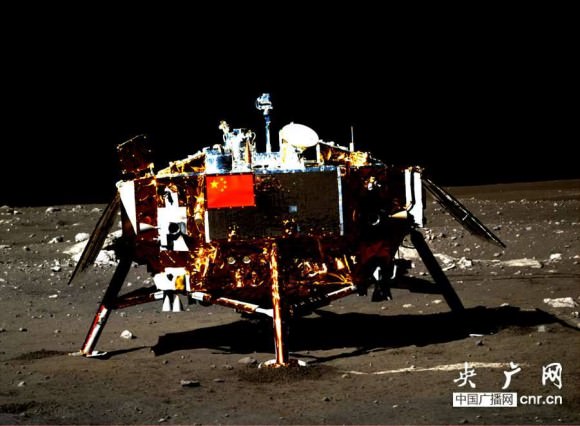
Credit: CNSA/CCTV
After arriving on the moon, Yutu and the lander took an initial pair of portraits of one another. Read my earlier report – here.
Yutu was then directed to travel in a semicircular path around the lander and to the south, making tracks several centimeters deep into the loose lunar regolith.
But within two days of the historic Dec. 14 touchdown, the two spacecraft took a four-day break that lasted from Dec. 16 to Dec. 20, during which China’s space engineers shut down their subsystems, according to China’s State Administration of Science, Technology and Industry for National Defense (SASTIND).
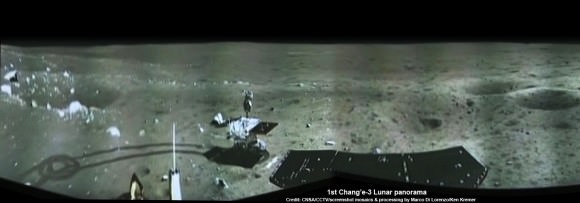
The vehicles took a ‘nap” to deal with direct solar radiation that significantly raised their temperatures. Yutu’s sunny side exceeded 100 degrees centigrade while the shaded side was simultaneously below zero, reported SASTIND.
“The break had been planned to last until Dec. 23, but the scientists decided to restart Yutu now for more research time, based on the recent observations and telemetry parameters,” said Pei Zhaoyu, spokesman for the Chinese lunar program, according to China’s Xinhua state news agency.
Both robots then snapped additional photos of one another during the traverse from each of five specific and preplanned locations.
See accompanying traverse map below – written in Chinese.
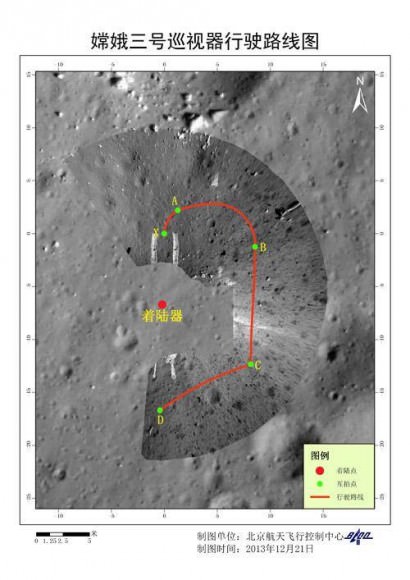
These images taken by Yutu were designed to show the 1200 kg Chang’e-3 lander from the front, side and back sides as it drove around the right side – for better illumination – at a distance of about 10 meters.
The final image of the Chang’e-3 lander taken by Yutu also captured China’s national flag emblazoned on the lander for the first time, since this was the first time it was in view of the rover’s camera eyes.
See the accompanying traverse graphic here – written in Chinese.
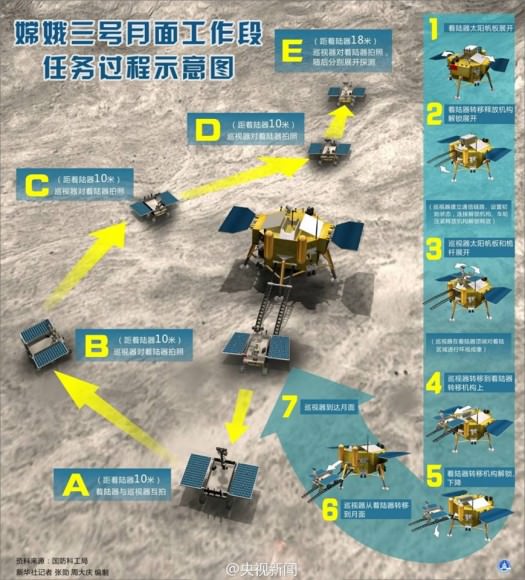
Having fulfilled the last of their joint tasks, the two spacecraft can therefore each begin their own lunar exploration missions, working independently of one another exactly as planned from the outset of China’s inaugural moon landing feat.
Yutu will depart the Chang’e-3 landing zone forever and begin its own lunar trek that’s expected to last at least 3 months – and perhaps longer if it’s delicate electronic components survive the moon’s utterly harsh and unforgiving space environment.
“They will begin to conduct scientific explorations of the geography and geomorphology of the landing spot and nearby areas, and materials like minerals and elements there. We will also explore areas 30 meters and 100 meters beneath the lunar soil. The exploration will continue longer than we planned, because all the instruments and equipments are working very well,” noted Wu Weiren.
The robotic pair of spacecraft safely soft landed on the Moon on Dec. 14 at Mare Imbrium, nearby the Bay of Rainbows, or Sinus Iridum region.
Barely seven hours after the history making touchdown, ‘Yutu’ was painstakingly lowered from its perch atop the lander and then successfully drove all six wheels onto the moon’s surface on Dec. 15.
The Chang’e-3 mothership captured a panoramic view of the stark lunar terrain surrounding the spacecraft after ‘Yutu’ drove some 9 meters away from the lander.
See the eerie panoramic view of the landing site showing Yutu’s first moments on the alien lunar surface in my prior story – here.
See the dramatic video with an astronauts eye view of the lunar descent and touchdown in my prior story – here.

The 120 kg Yutu rover is almost the size of a golf cart. It measures about 1.5 m x 1 m on its sides and stands about 1.5 m (nearly 5 feet) tall – virtually human height.
Yutu, which translates as ‘Jade Rabbit’ will use its suite of four science instruments to survey the moon’s geological structure and composition to locate the moon’s natural resources for use by potential future Chinese astronauts, perhaps a decade from now.
Stay tuned here for Ken’s continuing Chang’e-3, LADEE, MAVEN, MOM, Mars rover and more news.
Ken Kremer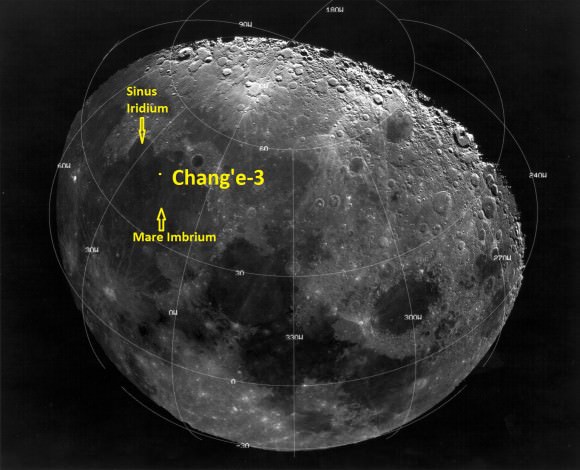 Landing site of Chinese lunar probe Chang’e-3 on Dec. 14, 2013. [/caption]
Landing site of Chinese lunar probe Chang’e-3 on Dec. 14, 2013. [/caption]

